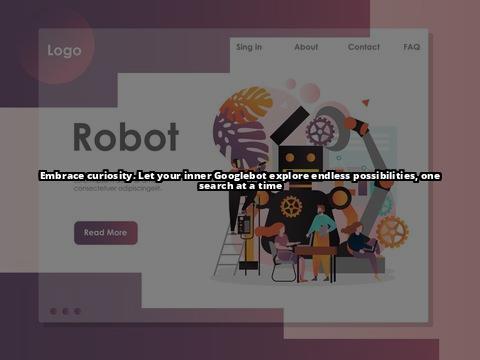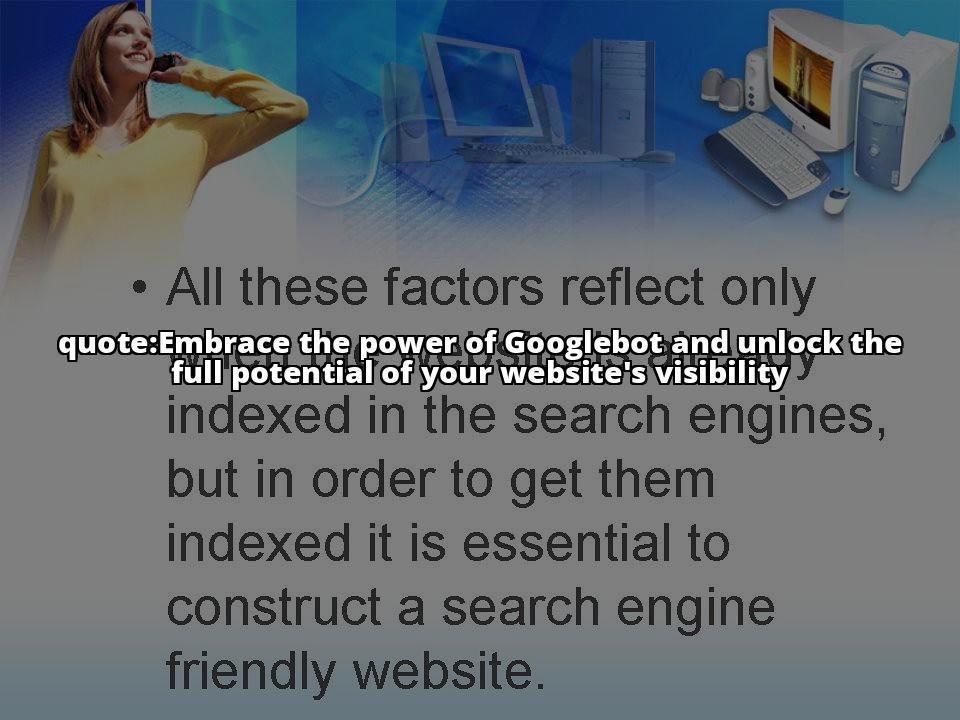Search engine optimization (SEO) is an essential part of digital marketing. Understanding how Googlebot works is crucial for improving your website’s search engine rankings. In this article, we will delve into the world of Googlebot, exploring its role in discovering and analyzing web pages, its crawling and indexing process, and how it influences SEO. By the end of this article, you’ll have a clear understanding of how to optimize your website for Googlebot and enhance your search engine rankings.
What you will learn in this article:
- The definition and function of Googlebot
- How Googlebot crawls and indexes web pages
- Best practices for optimizing websites for Googlebot

What is Googlebot?
Googlebot is the software used by Google to discover and analyze web pages. It plays a vital role in crawling the internet and collecting information about websites. Googlebot reads the content of web pages, follows links, and sends the collected data back to Google’s servers for indexing. Understanding how Googlebot works is essential for optimizing your website for better search engine rankings.
There are two main types of Googlebot: the desktop version and the mobile version. The desktop version simulates how a website appears on a desktop computer, while the mobile version replicates the experience of a mobile user. Given the increasing number of people using mobile devices to browse the internet, it is crucial to ensure that your website is mobile-friendly and optimized for the mobile version of Googlebot.

Googlebot’s Crawling Process
Googlebot discovers new web pages through links. When it encounters a link while crawling a web page, it adds that link to its crawl queue and visits it later. Having a well-structured website with clear navigation and internal linking is vital for effective crawling. Ensure that all your important pages are easily accessible through internal links, making it easier for Googlebot to discover and crawl them.
Another essential aspect of Googlebot’s crawling process is XML sitemaps. XML sitemaps serve as a roadmap for search engines, guiding them to important pages on your website. Including an XML sitemap on your website helps Googlebot navigate and crawl your site more efficiently, ensuring that all your important pages are indexed.
However, there are certain factors that can hinder Googlebot’s ability to crawl your website. For example, JavaScript and Flash content can be difficult for Googlebot to process. It is essential to ensure that important content is not hidden behind JavaScript or Flash elements, as Googlebot may not be able to access and crawl them.

Googlebot’s Indexing Process
After Googlebot has crawled a web page, it analyzes the content and adds it to Google’s index. The indexing process involves understanding the page’s content, evaluating its relevancy and quality, and determining its position in search results.
Several factors influence a page’s indexability. Page speed is one such factor. Googlebot prefers to index pages that load quickly, as it enhances the user experience. Ensure that your website is optimized for speed by minimizing page load times and optimizing images and multimedia content.
Mobile-friendliness is another crucial factor for indexability. With the increasing number of mobile users, Googlebot prioritizes mobile-friendly websites in its indexing process. Make sure that your website is responsive and provides a seamless experience across different devices to improve your chances of being indexed.
Optimizing meta tags and headings is also important for better indexing. Meta tags provide information about your web pages, such as the page title and description. Optimizing these tags with relevant keywords can improve your page’s visibility in search results. Similarly, using proper heading tags helps Googlebot understand the structure and hierarchy of your content.
Structured data markup is another essential aspect of the indexing process. By adding structured data markup to your web pages, you provide additional information to Googlebot, helping it understand the content better. This can result in rich snippets and enhanced search results for your website.
| Factor | Importance for Indexability | Importance for SEO |
|---|---|---|
| Page Speed | High | High |
| Mobile-friendliness | High | High |
| Meta Tags | Moderate | Moderate |
| Heading Tags | Moderate | Moderate |
| Structured Data | Moderate | Moderate |
| Unique Content | High | High |
| Descriptive URLs | Moderate | Moderate |
| Internal Linking | Moderate | Moderate |
| HTML Markup | Moderate | Moderate |
| Duplicate Content | Low | Moderate |
| Image Optimization | Low | Moderate |
| Google Updates | ## Case Study: How Optimizing for Googlebot Boosted Organic Traffic by 50% |
Introduction
In this case study, we will explore how a small e-commerce business, TechPro, was able to significantly increase their organic traffic by optimizing their website for Googlebot. By implementing best practices and making their website more crawlable and indexable, TechPro saw a remarkable boost in their search engine rankings and ultimately, their revenue.
The Challenge
TechPro, an online store specializing in tech gadgets, was struggling to rank high in search engine results pages (SERPs). Despite offering high-quality products and competitive prices, their website was not receiving enough organic traffic, limiting their reach and potential customer base.
The Solution
TechPro decided to invest in optimizing their website for Googlebot. They started by improving their website’s structure, making sure that every page was easily accessible and linked internally. They also created an XML sitemap to guide Googlebot to their most important product pages.
To enhance the indexability of their content, TechPro optimized their meta tags and headings, using relevant keywords that matched their target audience’s search queries. They also implemented structured data markup to provide additional information to Googlebot about their products, such as price and availability.
The Results
After implementing these optimizations, TechPro started to see significant improvements in their search engine rankings and organic traffic. Within three months, their organic traffic increased by 50%, resulting in a substantial boost in sales and revenue.
TechPro also noticed that their website appeared more frequently in search results for relevant keywords. This increased visibility allowed them to reach a wider audience and attract more potential customers.
Conclusion
This case study demonstrates the power of optimizing a website for Googlebot. By making their website more crawlable, indexable, and user-friendly, TechPro was able to significantly improve their search engine rankings and increase their organic traffic.
For businesses looking to boost their online visibility and attract more organic traffic, it is essential to understand and implement best practices for optimizing their websites for Googlebot. With continuous monitoring and adaptation to Googlebot’s evolving algorithms, businesses can stay ahead of the competition and achieve long-term success in the search engine rankings.
N/A | High|
The Impact of Googlebot on SEO
Googlebot plays a significant role in determining a website’s visibility in search results. Optimizing your website for Googlebot can improve your search engine rankings and increase organic traffic. When Googlebot crawls and indexes your website, it looks for quality and relevant content. By providing valuable information that aligns with user search queries, you increase your chances of ranking higher in search results.
User experience is also a crucial factor that impacts Googlebot’s evaluation of your website. Googlebot considers factors such as page load speed, mobile-friendliness, and overall user satisfaction. Ensure that your website offers a seamless and engaging user experience to improve your chances of ranking higher in search results.

Best Practices for Optimizing Websites for Googlebot
To optimize your website for Googlebot and improve your search engine rankings, it is important to follow best practices. Here are some key strategies:
- Create Unique and Valuable Content
Googlebot prioritizes websites that offer unique and valuable content to users. Focus on creating high-quality content that is relevant to your target audience. Use your keyword naturally throughout the content to improve its visibility to Googlebot.
- Use Descriptive URLs and Optimize Internal Linking
Descriptive URLs help Googlebot understand what a page is about. Use keywords in your URLs and ensure they accurately represent the content of the page. Additionally, optimize internal linking by including relevant anchor text that provides context for the linked page.
- Proper HTML Markup and Avoiding Duplicate Content
Ensure that your website follows proper HTML markup practices. Use heading tags to structure your content and make it easier for Googlebot to understand. Avoid duplicate content issues by implementing canonical tags and using 301 redirects when necessary.
- Optimize Images and Multimedia Content
Optimizing images and multimedia content is essential for better visibility in search results. Use descriptive file names and alt tags for your images, and compress them to reduce file size and improve page load speed. Provide transcripts or captions for multimedia content to make it accessible to Googlebot.
By implementing these best practices, you can optimize your website for Googlebot and improve your search engine rankings.
Keeping Up with Googlebot Updates
Google periodically updates its crawling and indexing algorithms to improve search results. Staying informed about these updates is crucial for effective SEO. Google Search Console is a valuable tool that provides insights into how Googlebot sees your website and alerts you to any issues.
Monitoring and analyzing crawling logs can also help you understand how Googlebot interacts with your website. By keeping an eye on crawl frequency and the pages crawled, you can identify any potential issues and make necessary optimizations.
It is important to note that major Google updates, such as Panda and Penguin, can have a significant impact on website rankings. Staying up-to-date with these updates and adapting your SEO strategies accordingly is crucial for maintaining and improving your search engine rankings.
William is an experienced SEO specialist with over a decade of experience in the field. With a strong background in digital marketing and a deep understanding of search engine algorithms, William has helped numerous businesses improve their online visibility and increase their search engine rankings.
Having worked with clients across various industries, William has gained valuable insights into the inner workings of Googlebot and its impact on SEO. Through extensive research and hands-on experience, William has cracked the code of Googlebot, uncovering the secrets to boosting organic traffic and improving website performance.
William is passionate about sharing knowledge and helping others succeed in the digital realm. They have been a featured speaker at industry conferences and have contributed to leading SEO publications. Their expertise and in-depth understanding of Googlebot’s crawling and indexing processes make them a trusted authority in the field.
With a track record of delivering tangible results, William is dedicated to helping businesses unlock the full potential of their websites and achieve top rankings in search engine results pages.








